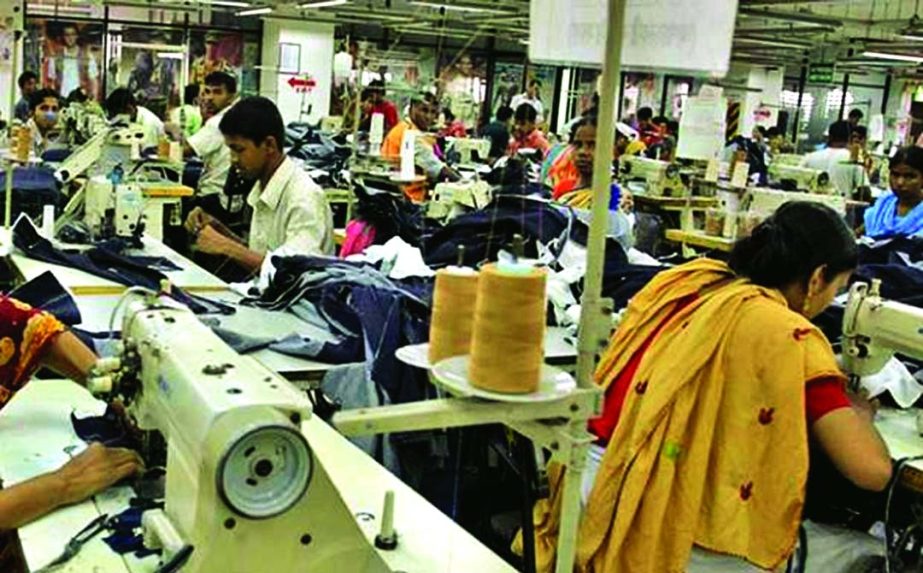
bdnews24.com :
After the Rana Plaza collapse, Bangladesh’s readymade garment industry faced unprecedented pressure from buyers abroad to improve working conditions in factories.
Buyers from the European Union formed the group Accord and those from North America formed Alliance to look into compliance issues in the country’s garment factories.
The government formed a review committee to analyse their reports on working conditions in the more than 3,500 factories in Bangladesh.
Accord is monitoring working conditions in 1,619 factories and the Alliance is monitoring that in another 700.
These factories produce 86 percent of the country’s readymade garments, which are exported to European and American markets.
Both Accord and Alliance have come up with reports after assessment of conditions in about 700 factories.
The review panel, on the basis of the reports, has shut down 13 factories in four buildings in Dhaka and Chittagong.
What impact the Rana Plaza collapse has had on Bangladesh’s readymade garments industry?
Hafiz Ahmed Mazumder, one of the industry’s early entrepreneurs, says that the garments industry was initially was unorganised, but the new generation entrepreneurs are now paying a lot of attention to compliance issues.
Mazumder says some are trying to come up with ‘international standard factories.’
At least 90 percent of factories are now located in good and safe buildings, he said.
On April 24 last year, the multi-storied building in Savar caved in, killing over 1,100 people, mostly workers of the five garment factories in that high-rise. Some months before, a fire at Tazreen Fashions killed over 110 workers.
These disasters drew global attention to issues of workplace safety and labour rights in Bangladesh, the second largest clothing exporter in the world after China.
Western buyers faced flak back home for sourcing their products from ‘unsafe working environments’.
USA cancelled its GSP facilities under which it offered Bangladesh some trade privileges in June, saying the factories were unsafe.
Bangladesh Institute of Development Studies (BIDS) researcher Zaid Bakht, however, said the fears of losing business did not happen.
“We have achieved a 13 percent growth in RMG even after Rana Plaza.” As the Savar tragedy made global headlines, the government, buyers, International Labour Organisation and workers came together in an unprecedented effort to jointly improve the conditions in the garments industry.
Many measures have already been implemented, some are underway, the minimum wages have been raised and legal and policy reforms carried through.
The US Trade Representative’s office says Bangladesh has made ‘considerable improvement’ in workplace safety and labour rights, but said ‘more needed to be done’.
CPD Executive Director Mustafizur Rahman is optimistic.
“So many initiatives have never been taken before for this sector. In light of the accident, an unprecedented amount of coordinated programmes have been taken,” he said.
BIDS Senior Researcher Naznin Ahmed agrees that the factory compliance issues have received a lot of importance.
“Previously we only talked of wage hikes, but since Rana Plaza, workplace safety issues have been given much consideration,” she told bdnews24.com.
Last December, minimum wage for RMG workers was raised by almost 76 percent to Tk 5,300 per month.
The government and owners have also softened up to the idea of allowing trade unions.
New laws have been introduced to ensure occupational health and safety at the factories.
The 2006 labour law has been amended. Forming trade unions has been made easier and monitoring has improved as well.
Manpower at the Office of the Chief Inspector of Factories and Establishment has been increased by several times. Over 3,500 buildings that have RMG factories in them have been inspected by 23 new inspection teams.
Contracts have been signed with several international agencies to ensure safe work environment, allocation has been increased in fire-fighting.
Many initiatives have also been taken for workers’ welfare.
Buyers are reluctant to source products from factories that are housed in shared buildings considered unsafe and crowded.
The government intends to construct an industrial village in Munshiganj for the RMG industry to offer greater space and better working conditions. BGMEA President Atiqul Islam believes most of the garments factories would survive the scrutiny of compliance.
“The way some people talk, you would think every factory in Bangladesh is in terrible condition. But the truth is quite different.
“Only 13 of the 700 factories have been found to have problems, which means the majority of factories are just fine,” he told bdnews24.com.
Owners want buyers to raise prices to maintain compliance.
Atiqul Islam said, “Our production costs have increased by 18 percent a year, but retail garment prices in Europe and USA have fallen by seven percent. So the buyers must raise prices.”
BIDS Research Director Bakht, however, higher prices can be achieved if exporters bargain hard.
“The problem is on our side. Buyers drive down the prices through competition.” European buyers’ group Accord’s Executive Director Rob Ways told bdnews24.com that the Bangladeshi garments industry would rise to the top globally once compliance issues were fully addressed. CPD’s Mustafizur Rahman sees hope in the buyers’ efforts.
“Both Alliance and Accord want to work with Bangladesh to improve the garments sector. We have to utilise this opportunity,” he said.
Naznin Ahmed, too, sees possibilities. “In the free market economy, the biggest barriers to international trade are non-tariff barriers. Most of these barriers involve compliance issues. Sri Lanka is increasing their compliance to attract buyers,” she said.
Recently, Finance Minister AMA Muhith expressed hope that the country’s exports will grow to $70 billion in the next five years.
Hafiz Mazumder, the current Pubali Bank chairman, says the sector had been quite resilient.
“The Rana Plaza collapse was unanticipated and undoubtedly it was a stray incident. You cannot judge all factories by Rana Plaza.”
“Despite the tragedy, and the political unrest last year, the industry saw an astonishing growth.
“This growth will accelerate. In five to seven years, garment exports will double and reach $ 50 billion,” he said.

